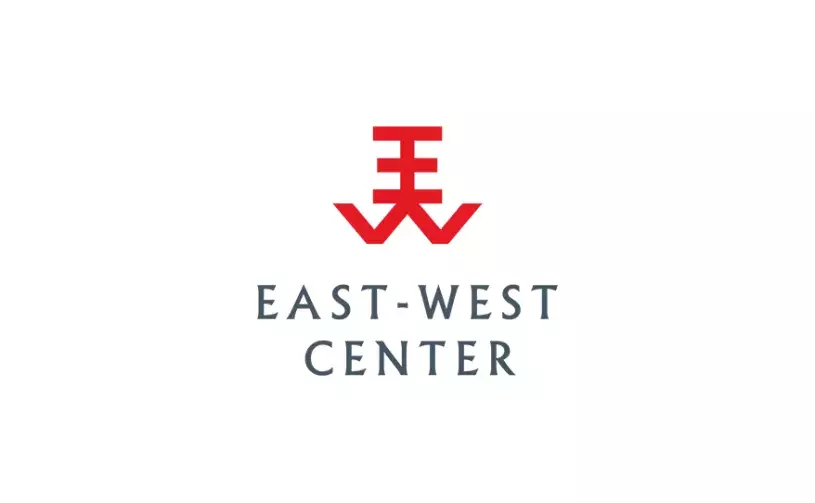Error message

By Joshua Muldavin
HONOLULU (Apr. 5, 2019)—Environmental problems are a focus of both popular unrest within China and concern about the “China threat” in the rest of the world. Yet many assumptions and suggestions for how to “fix” China’s environmental problems are flawed by a poor understanding of how these problems arose in the first place and how they are perpetuated.
Although pollution created by automobiles, heavy industry, and coal-fired power plants captures most of the public attention, many of China’s rural areas are also plagued by serious environmental problems. These include air, land, and water pollution; resource degradation and scarcity; deforestation; and soil erosion, salinization, and desertification. These problems affect rural livelihoods and make it difficult for Chinese farmers to keep up with the nation’s rapidly growing demand for food and other agricultural products.
The precarious position of China’s farmers creates civic unrest and pushes members of the farming community to migrate to cities in search of employment. This leaves much of the backbreaking work on farms to children and the elderly in increasingly hollowed-out communities.
Frequent headlines report a growing number of “natural” disasters, such as flooding and sandstorms, attributed to poor land management. Government officials have tended to blame small-scale farmers for growing rates of land degradation that contribute to these incidents. Yet China’s small-scale farmers have fed the nation and maintained their fields for 4,000 years. Why is the agricultural sector plagued by environmental damage and resource loss today?
Part of the answer goes back to the breakup of China’s large collective farms in the early 1980s. With the introduction of a “household responsibility system,” multiple economic and environmental problems soon emerged.
The heavy machines employed for large-scale agricultural production were useless for planting, cultivating, and harvesting on small individual plots. Farmers were stranded without appropriate equipment, while at the same time, the government was cutting back support for the agricultural sector. Farmers were forced to revert to hand cultivation, reducing efficiency and yields in regions where large-scale mechanized agriculture had been established for decades.
Without any means to organize collective labor, farmers were forced to let irrigation systems break down and disband collective grain-storage facilities, lowering productivity and increasing waste. In addition, facilities that had been owned and operated collectively, such as grain mills, were allocated to individual farmers, greatly increasing the wealth gap among rural households.
At the national level, the allocation of assets formerly owned by the state to a small number of individuals—including land and natural resources—created a new class of multi-millionaires. One result of the growing wealth gap arising from such “land grabs” has been growing distrust of government and increasing incidents of social unrest. An estimated 300 to 500 acts of resistance take place in China every day.
At the same time, disinvestment in agriculture and rural infrastructure continues, with further declines in productivity and a dramatic escalation of environmental problems. Again, the government has tended to direct blame for this onto farmers and has imposed restrictions on land use that are often misguided.
For example, cultivation on steep hillsides has been outlawed, forcing farmers to abandon terrace systems that sustained crops for centuries. The abandoned terraces have quickly eroded, leading to soil loss and pollution downstream. Migration to urban areas has had a similar effect, depriving rural communities of the labor required to maintain traditional systems of sustainable production.
Yet careful observers have noted that the most serious cases of soil erosion in rural China are linked to the construction of roads and dams, as well as agribusiness and large state-owned timber companies, and not to the land-use practices of small farmers.
There are two prevailing schools of thought about how China’s problems of sustainable production and environmental damage can be solved. One favors free-market economic growth through integration into the global economy. This philosophy argues that economic growth will, more or less automatically, provide the necessary capital for technological innovation and ultimately more environmentally sound use of resources.
Another school of thought favors a more activist approach, featuring government interventions such as direct support for research and innovation, a strong legal framework to regulate corporate activity, and a tax system that favors “green” technologies. The Chinese government has generally adopted this approach, along with the World Bank and other international development organizations.
Both these positions potentially provide a big economic boost to the advanced industrial economies of the West—huge new markets for environmental technologies such as wind and solar power, pollution abatement, and water treatment. As early as 1997, a World Bank official argued that China represented “a potential US $500 billion environmental technology market” that could be a savior for Western economies.
Yet the plight of China’s agricultural sector is not likely to be resolved by free markets or the top-down importation of technology from the West. Rather, the environmental and economic problems faced by China’s farmers stem directly from a model of economic growth built on the destructive extraction of natural resources and massive capital accumulation fueled by land grabs and the uprooting of local populations. And over the past two decades, China has begun exporting this development model to other parts of the world, creating environmental and social problems in such diverse regions as Russia’s Far East, South and Southeast Asia, Latin America, and Africa.
Contrary to popular belief, China’s practices are consistent overall with the primary goals of other major global actors—aid agencies, financial institutions, corporations, hedge funds, and sovereign wealth funds—often acting in direct or indirect partnership. While there are benefits for some, overall the trend continues historical processes of dispossession and growing inequality.
Companies in the West long disciplined their workers and communities by threatening to move production to China where displaced peasants provided a ready workforce. Today such “globalization” actions face a wave of populism and “China bashing.” Yet simplistic China bashing fails to see the complicity of Western countries and international institutions in China’s global integration. The plight of China’s peasants and rural environment is a wake-up call for us all.
###
Joshua Muldavin is Professor of Geography and Chair of Social Sciences at Sarah Lawrence College. He has studied issues of environment and rural development for nearly 40 years, mostly in rural China. This issue of the East-West Wire is based on a recent seminar that Professor Muldavin conducted at the East-West Center. He can be reached at [email protected].
Download a pdf version of this Wire article.
The East-West Wire is a news, commentary, and analysis service provided by the East-West Center in Honolulu. All or any part of the Wire content may be used by media with attribution to the East-West Center or the person quoted. To receive Wire articles via email, subscribe here. For links to all East-West Center media programs, fellowships and services, see EastWestCenter.org/Journalists.
The full list of East-West Wires produced by the Research Program is available on the East-West Center website at EastWestCenter.org/Research-Wire. For more on the East-West Center Research Program, see EastWestCenter.org/Research.
The East-West Center promotes better relations and understanding among the people and nations of the United States, Asia, and the Pacific through cooperative study, research, and dialogue.
Series editors:
Derek Ferrar
[email protected]
Sidney B. Westley
[email protected]
The views expressed are those of the author and do not necessarily reflect the policy or position of the East-West Center or any organization with which the author is affiliated.
By Joshua Muldavin
HONOLULU (Apr. 5, 2019)—Environmental problems are a focus of both popular unrest within China and concern about the “China threat” in the rest of the world. Yet many assumptions and suggestions for how to “fix” China’s environmental problems are flawed by a poor understanding of how these problems arose in the first place and how they are perpetuated.
Although pollution created by automobiles, heavy industry, and coal-fired power plants captures most of the public attention, many of China’s rural areas are also plagued by serious environmental problems. These include air, land, and water pollution; resource degradation and scarcity; deforestation; and soil erosion, salinization, and desertification. These problems affect rural livelihoods and make it difficult for Chinese farmers to keep up with the nation’s rapidly growing demand for food and other agricultural products.
The precarious position of China’s farmers creates civic unrest and pushes members of the farming community to migrate to cities in search of employment. This leaves much of the backbreaking work on farms to children and the elderly in increasingly hollowed-out communities.
Frequent headlines report a growing number of “natural” disasters, such as flooding and sandstorms, attributed to poor land management. Government officials have tended to blame small-scale farmers for growing rates of land degradation that contribute to these incidents. Yet China’s small-scale farmers have fed the nation and maintained their fields for 4,000 years. Why is the agricultural sector plagued by environmental damage and resource loss today?
Part of the answer goes back to the breakup of China’s large collective farms in the early 1980s. With the introduction of a “household responsibility system,” multiple economic and environmental problems soon emerged.
The heavy machines employed for large-scale agricultural production were useless for planting, cultivating, and harvesting on small individual plots. Farmers were stranded without appropriate equipment, while at the same time, the government was cutting back support for the agricultural sector. Farmers were forced to revert to hand cultivation, reducing efficiency and yields in regions where large-scale mechanized agriculture had been established for decades.
Without any means to organize collective labor, farmers were forced to let irrigation systems break down and disband collective grain-storage facilities, lowering productivity and increasing waste. In addition, facilities that had been owned and operated collectively, such as grain mills, were allocated to individual farmers, greatly increasing the wealth gap among rural households.
At the national level, the allocation of assets formerly owned by the state to a small number of individuals—including land and natural resources—created a new class of multi-millionaires. One result of the growing wealth gap arising from such “land grabs” has been growing distrust of government and increasing incidents of social unrest. An estimated 300 to 500 acts of resistance take place in China every day.
At the same time, disinvestment in agriculture and rural infrastructure continues, with further declines in productivity and a dramatic escalation of environmental problems. Again, the government has tended to direct blame for this onto farmers and has imposed restrictions on land use that are often misguided.
For example, cultivation on steep hillsides has been outlawed, forcing farmers to abandon terrace systems that sustained crops for centuries. The abandoned terraces have quickly eroded, leading to soil loss and pollution downstream. Migration to urban areas has had a similar effect, depriving rural communities of the labor required to maintain traditional systems of sustainable production.
Yet careful observers have noted that the most serious cases of soil erosion in rural China are linked to the construction of roads and dams, as well as agribusiness and large state-owned timber companies, and not to the land-use practices of small farmers.
There are two prevailing schools of thought about how China’s problems of sustainable production and environmental damage can be solved. One favors free-market economic growth through integration into the global economy. This philosophy argues that economic growth will, more or less automatically, provide the necessary capital for technological innovation and ultimately more environmentally sound use of resources.
Another school of thought favors a more activist approach, featuring government interventions such as direct support for research and innovation, a strong legal framework to regulate corporate activity, and a tax system that favors “green” technologies. The Chinese government has generally adopted this approach, along with the World Bank and other international development organizations.
Both these positions potentially provide a big economic boost to the advanced industrial economies of the West—huge new markets for environmental technologies such as wind and solar power, pollution abatement, and water treatment. As early as 1997, a World Bank official argued that China represented “a potential US $500 billion environmental technology market” that could be a savior for Western economies.
Yet the plight of China’s agricultural sector is not likely to be resolved by free markets or the top-down importation of technology from the West. Rather, the environmental and economic problems faced by China’s farmers stem directly from a model of economic growth built on the destructive extraction of natural resources and massive capital accumulation fueled by land grabs and the uprooting of local populations. And over the past two decades, China has begun exporting this development model to other parts of the world, creating environmental and social problems in such diverse regions as Russia’s Far East, South and Southeast Asia, Latin America, and Africa.
Contrary to popular belief, China’s practices are consistent overall with the primary goals of other major global actors—aid agencies, financial institutions, corporations, hedge funds, and sovereign wealth funds—often acting in direct or indirect partnership. While there are benefits for some, overall the trend continues historical processes of dispossession and growing inequality.
Companies in the West long disciplined their workers and communities by threatening to move production to China where displaced peasants provided a ready workforce. Today such “globalization” actions face a wave of populism and “China bashing.” Yet simplistic China bashing fails to see the complicity of Western countries and international institutions in China’s global integration. The plight of China’s peasants and rural environment is a wake-up call for us all.
###
Joshua Muldavin is Professor of Geography and Chair of Social Sciences at Sarah Lawrence College. He has studied issues of environment and rural development for nearly 40 years, mostly in rural China. This issue of the East-West Wire is based on a recent seminar that Professor Muldavin conducted at the East-West Center. He can be reached at [email protected].
Download a pdf version of this Wire article.
The East-West Wire is a news, commentary, and analysis service provided by the East-West Center in Honolulu. All or any part of the Wire content may be used by media with attribution to the East-West Center or the person quoted. To receive Wire articles via email, subscribe here. For links to all East-West Center media programs, fellowships and services, see EastWestCenter.org/Journalists.
The full list of East-West Wires produced by the Research Program is available on the East-West Center website at EastWestCenter.org/Research-Wire. For more on the East-West Center Research Program, see EastWestCenter.org/Research.
The East-West Center promotes better relations and understanding among the people and nations of the United States, Asia, and the Pacific through cooperative study, research, and dialogue.
Series editors:
Derek Ferrar
[email protected]
Sidney B. Westley
[email protected]
The views expressed are those of the author and do not necessarily reflect the policy or position of the East-West Center or any organization with which the author is affiliated.
East-West Wire
News, Commentary, and Analysis
The East-West Wire is a news, commentary, and analysis service provided by the East-West Center in Honolulu. Any part or all of the Wire content may be used by media with attribution to the East-West Center or the person quoted. To receive East-West Center Wire media releases via email, subscribe here.
For links to all East-West Center media programs, fellowships and services, see www.eastwestcenter.org/journalists.







